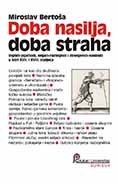Doba nasilja, doba straha: Vojnici-pljačkaši, seljaci-razbojnici i doseljenici-nasilnici u Istri XVII. i XVIII. stoljeća
The Age of Violence, The Age of Fear: Soldiers-looters, peasant-robbers and settlers-thugs in Istria of the XVII. and XVIII. century
Author(s): Miroslav Bertoša
Subject(s): History, Anthropology, Social Sciences, Cultural history, Local History / Microhistory, Modern Age, Culture and social structure , 17th Century, 18th Century
Published by: Durieux
Summary/Abstract: The first part of the book shows the Uskok war (1615-1618), which was only seemingly a short historical bang. It was in fact an event whose consequences in the economic sphere were felt for decades, and in the mental structures of the consciousness of future generations - for centuries, even until today. Based on archival sources and published literature, the author shows how those tragic historical events between the 16th and 17th centuries left a deep and indestructible mark on the mentality of the Istrian man, a time when Croatian Venetian subjects (Benečani) and Croatian subjects of the Austrian Archduke (Kraljevci) identified with the feudal banners of their masters and under them attacked people of the same class and ethnicity.
The second part deals with the world of the marginal - those people who have been disenfranchised by the European Ancien Régime and pushed to the margins of society. This world, once silenced, has become, at least in modern social historiography, one of the central contents of the study of the past. Bundles of court documents, which until recently the historian did not consider essential for interpreting the historical development of a society, became indispensable in the analysis of its structures. The "archives of silence" spoke about those marginalised who had been deprived of the right to speak by previous societies and their ideologized historiographies. A cruel world in which people become exiles and villains, where cruelty is born and where blood causes blood.
The third part of this book, as far as the archival material allows, presents a meticulous reconstruction of the events related to the arrival of hajduk settlers in the Pula region and an analysis of the cause-and-effect relations that led to this events. Hajduk migration and the problems it caused are observed within the then historical situation in Istria, so some issues presented are not as closely related to the colonization of Hajduk, but directly or indirectly affected it.
Miroslav Bertoša (1938) is a historian and long-term scientific advisor at the Institute of Historical and Social Sciences of the Croatian Academy of Sciences and Arts (HAZU), now a professor at the University of Juraj Dobrila in Pula. First Consul General of the Republic of Croatia in Trieste (1995-1998). Associate member of HAZU. He began publishing essays, articles and critiques in 1954, and since 1963 he has been researching modern Istrian history and Istrian anti-fascism, as well social, political, demographic and ethnic components of the Venetian part of Istria and the northern Adriatic area from the 16th to the 18th century. He is a connoisseur of contemporary historiography, and especially of movements in the avant-garde French Annales school. Alongside Robert Matijašić he was coeditor of the Istrian Encyclopedia (2005).
- Print-ISBN-13: 978-953-188-312-2
- Page Count: 531
- Publication Year: 2010
- Language: Croatian
- Table of Content
- Sample-PDF
- eBook-PDF

